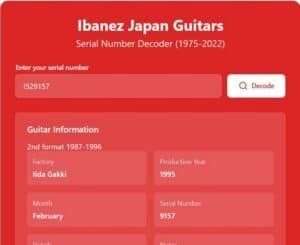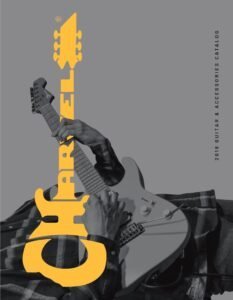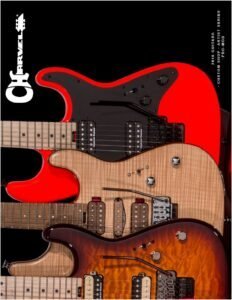“For sale, Lawsuit Japanese guitar.”
“Great Lawsuit guitar! Very rare!”
“Buy this guitar, it’s a Lawsuit!”
Today, the term ‘Lawsuit’ has become one of the most prevalent words in the Japanese vintage guitar market. Scan through eBay or Reverb ads, and you’ll encounter numerous sellers promoting their Gibson copies—and occasionally even Fender replicas(!)—as ‘Lawsuit’ guitars. This trend has sparked a significant hype, with certain sellers leveraging this claim to hike up their guitar prices. In this article, we aim to dispel the myth and tackle the ‘Lawsuit’ argument, ensuring you won’t fall for misleading tactics when purchasing a Made in Japan guitar!
What does “Lawsuit” mean?
The term ‘Lawsuit’ in English refers to a legal case where two parties confront each other in court due to one claiming harm.
Interestingly, in discussions about vintage Japanese guitars made in the 1970s, ’80s, or even ’90s, the term ‘Lawsuit’ is frequently thrown around. But does it accurately apply in this context?
The origins: Harry Rosenbloom, Elger Guitars, Hoshino Gakki, Ibanez
In 1954, Harry Rosenbloom opened Medley Music, a store in Bryn Mawr, Pennsylvania, amidst post-World War II economic boom, where the demand for musical instruments, especially guitars, soared. But the supply couldn’t match; waiting times for Martin acoustic guitars extended to three years!
To counter this, Rosenbloom established his guitar factory to address the shortage. Naming the venture Elger Guitars from the names of his children, Ellen and Gerson, he initially crafted instruments himself in 1959. Recognizing the need for more production, Rosenbloom brought in Karl Muller, a German luthier along with his brother Georg, forming a production team. Together, they crafted top-quality guitars until 1964.
By 1964-65, Elger Guitars transitioned from handcrafted guitars to importing instruments. Recognizing the potential stigma against “Made in Japan” goods, Rosenbloom avoided importing under a Japanese-sounding name. Instead, Elger Guitars began importing from Hoshino Gakki Gen Company, which had acquired a small Spanish company, Ibanez, and retained the name. The last Elger guitars (1965-1970) were crafted in Japan, akin to the later-produced Ibanez guitars of the ’70s.
In 1971, Hoshino Gakki acquired Elger Guitars, rebranding it Ibanez USA. Initially unknown in the American market, Ibanez expanded in the ’70s with reproductions of iconic Fender, Gibson, and Rickenbacker guitars. The success of these reproductions stemmed from cost-effective labor, cheaper raw materials in Japan, and streamlined production processes.
However, early Japanese guitar copies weren’t exact replicas due to being based on catalog photos or artist interpretations. For instance, Gibson copies featured bolt-on necks instead of set-necks until around 1976-77, with plywood bodies and White Sycamore tops. Despite these differences, Ibanez gained popularity among young American artists who found them more affordable yet still high in quality compared to original guitars. Musicians like Eddie Van Halen, Chris Holmes, and Ace Frehley contributed to the brand’s acclaim.
The “Gibson vs. Ibanez” trial
On June 9, 1977, Norlin, the parent company of Gibson, filed a lawsuit against Elger (Ibanez USA) in Philadelphia. This legal battle, termed “Gibson Vs. Elger Co.”, revolved around Gibson’s accusation of copyright infringement against Ibanez for replicating guitar headstocks in the “Open Book” format. The lawsuit sought compensation of 1.5 billion Yen, amounting to over $6 million at that time. Gibson had been issuing threats of legal action against Ibanez leading up to this lawsuit.

The shift in Ibanez’s guitar headstock format before the trial in 1977 seems deliberate. Evidence of this change can be found by examining Ibanez catalogs, where instruments in the 1976 editions already featured a different headstock format resembling Guild Guitars.
During the 1977 NAMM Show, Gibson (Norlin) allegedly attempted to undermine Ibanez by preventing the display of their guitars and basses with the Open Book headstock format. However, Ibanez had foreseen this issue and managed to exhibit their instruments with the Guild-format headstocks.
As a result, claims suggesting that Gibson (Norlin) sued various Japanese guitar brands are deemed false and without foundation, given this context.
This change in headstock size occurred as soon as Ibanez began affixing serial numbers to their instruments. There are a few ‘Lawsuit’ Ibanez copies with serial numbers from November and December 1975, but most ‘Lawsuit’ models have none.
By February 1978, Ibanez had reached an agreement with Norlin to cease copying Gibson headstocks. Consequently, Ibanez stopped producing copies and began crafting original guitars. This marked the launch of the Artist Series and the reintroduction of the Iceman model, which gained popularity in the hands of Paul Stanley (Kiss), becoming his signature guitar (the Paul Stanley Iceman). During this period, Ibanez produced guitars of exceptional quality, comparable to Gibson’s in terms of construction and finishing.
That concludes this article, and I hope I’ve shed light on the ‘Lawsuit’ guitar issue. Don’t trust sellers who misuse this argument to inflate the prices of their instruments in sales ads. An informed vintage Japanese guitar buyer is worth two. Stay vigilant and enjoy making great music!
Some of the information in this article comes from GuitarAttack






11 Responses
I have a Maya J45 copy bought in 1982 but in excellent condition & wonderful sound. Does anyone know anything about Maya Gibson copies please and likely value?
Thank you for the detailed background! I would like to add that the issue was resolved in ’76 as it relates to Ibanez exporting the open book designed headstock guitars for sale in the USA.
Ibanez, Greco, Aria Pro II and other MIJ brands were still making copies with the same/similar specifications as Gibson’s designs by their manufacturers (FujiGen, Matsumoku, etc.) even into the early 80’s, but limited sales to only Japan’s local market. Of course now we all benefit from the construction of these fine instruments as they are bought and sold in today’s global market.
The story is usually reported as “Norlin and Elger settled the issue out of court”. Besides the fact that the subject of the claim wasn’t existing anymore, to my knowledge Norlin merely applied for a C&D order and notified Elger Co. about this. Elger likely replied “what the hell are you guys talking about?” and the whole issue vanished into thin air. Source of the legend is likely a crappy newspaper article that was published 1977, announcing the “legal action” in similar ways as the intimidation letter to the dealers above. This short article may have been reprinted coast-to-coast and is the true source of the stupid legend.
I have what I believe to be a 1997 Japanese Ibanez lawsuit model. It’s a stereo 335 style (356?or something). It’s a magnificent guitar in fabulous condition considering the year. I have no idea of it’s worth. (Not that I want to sell it), can anyone help? Please.
I was an Elger/Hoshino dealer throughout that period, it was no biggie back then but I do remember distinctly when Hoshino threw in the towel on exact replicas so to speak.. at the time Ibanez guitars and Tama drums were built in metric dimensions so parts didn’t interchange with SAE built American guitars either, but you’re exactly right concerning the mole hill lawsuit “ threat” turning into a mountain of disinformation by greedy ignorant liars for the sake of profit. It’s pointless nowadays to argue the details with waves of illiterate hacks who hear you out but make no changes in their sales descriptions, as if they know and don’t care or simply don’t believe?
Funny how all exports from Asia quit using the headstock design by 1978 as well, I collect vintage jap guitars now as a hobby and still have most of my brochures from way back when as well, it’s like Norton fired a warning shot at Hoshino but all Asian copy cats fell in line, at least those in the export business, you’ll notice Tokai and Kasuga didn’t budge.. but they didn’t export either. Good work btw!
Thank you very much for your testimonial 🙂
Thank you so very much…. you’ve answered my questions and… I did buy a true lawsuit… black . Open book ,bolt on ,no serial # … all original $400.oo in 2021
Nice to know the real story
Do you have a source for the “The lawsuit sought compensation of 1.5 billion Yen, amounting to over $6 million at that time.”? This sounds a bit odd, since 1. to my knowledge there are no records of this “lawsuit” to find in the archives (because it didn’t happen) where such a compensation claim would’ve been recorded and 2. this “lawsuit” would not have taken place in Japan (JPY) but still in the Philly District Court ($US), so this sentence is raising questions.
I have a few lawsuit guitars. LPs, one Strat all under the name of CSL. Bought new in the 70s in London. One Amazing Gold top. Was an English company, but they are Ibanez. Real as real can get
I have 2 lawsuit models, 1984 Tokai Breezysound and a 1978 Morris Led Paul cutaway.
Both Japanese built. Must cash in one day!